


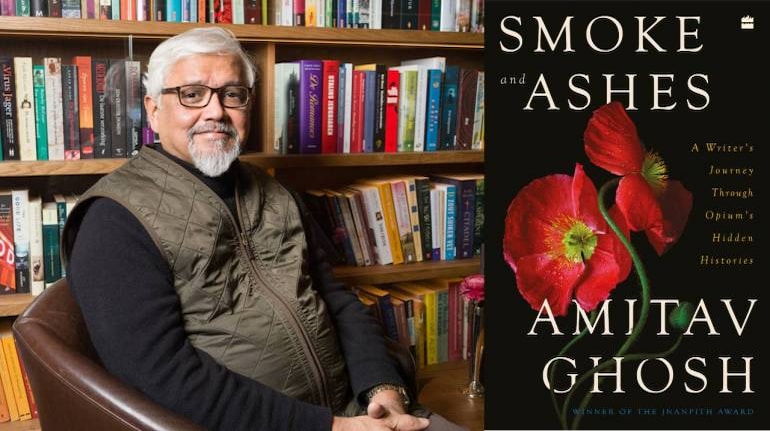
It’s been a stunning year for books from India—and it will perhaps come as no surprise that a lot of the action is taking place in translation, immigrant writing and non-fiction. There’s substantial millennial perspective on shelves this year—a lot of it deeply political, smartly (and often cynically) reckoning with the monumental shifts that are currently underway in India. They span the spectrum of genre—straightforward thrillers to mind-bending speculative treatises; and deal with big, pulpy themes like power, class, family, corruption as well as tend to universal themes like love, loss and belonging. Between them, these 24 books demonstrate what it means to be Indian today—our preoccupations, paranoias, and persuasions laid bare for the world. As we get set to welcome 2024, a 2023 recap through books:
Fiction:
1. Age of Vice by Deepti Kapoor
“India’s answer to The Godfather”, declared The Guardian in a headline about Deepti Kapoor’s sophomore novel, a thriller that scorched bookshelves across the world in January. It follows three young men and one woman from vastly disparate backgrounds, whose lives get entangled forever one fateful night. With superb pace and intrigue, Kapoor paints a cinematic portrait of 21st India, where the filthy rich and dirt-poor spin through a vortex of power, corruption and unbridled avarice.
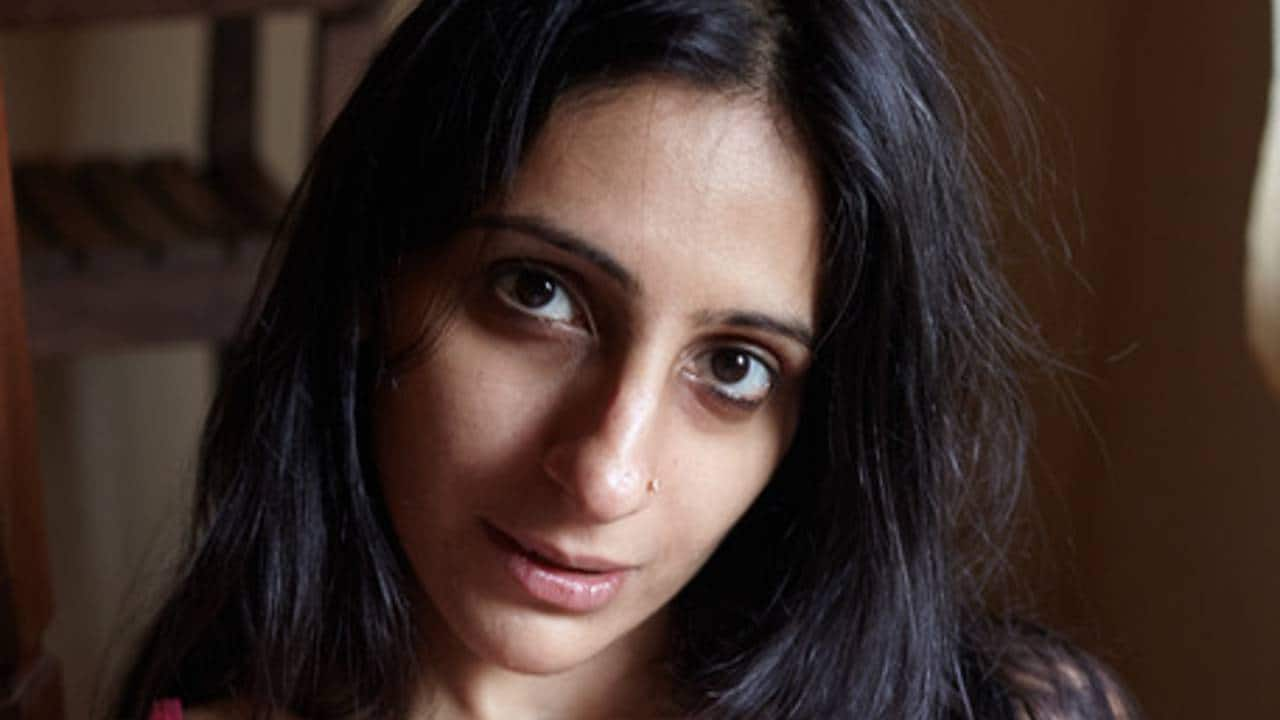 Deepti Kapoor
Deepti Kapoor
2. Quarterlife by Devika Rege
A jaded Wall Street consultant returns to India. A college acquaintance is eager to escape the drudgery of her New England life to teach in a Muslim-majority slum in Mumbai. His younger brother is using his family’s newfound wealth to climb the social ladder in Mumbai, but feels the need to dig deeper into his roots. Around them, a new India is taking shape, an aggressive political party in power, and the air is rife with a certain kind of optimism. Devika Rege’s stunning debut might just be the definitive “millennial India” book—expertly documenting the conversations and preoccupations of a guinea pig generation.
3. Sakina’s Kiss by Vivek Shanbhag
Eight years after the groundbreaking Ghachar Ghochar, we have a Shanbhag novel translated in English by the equally inimitable Srinath Perur—and what a treat. Our narrator Venkat is stuck in a quagmire of mediocrity, a mid-level executive with tepid relationships with his wife and daughter. Except in a Taken-like spin, his daughter disappears, and he has to go up against a world of men—gangsters, policemen, politicians, tabloid journalists—to find her. Shanbhag is delightfully acidic as usual on caste, class, gender hierarchies and family power dynamics.
4. This Is Salvaged by Vauhini Vara
A new book from Vauhini Vara, the Canadian-American writer of Indian origin whose debut novel The Immortal King Rao was on the Pulitzer shortlist, was always going to be exciting. These 10 short stories deal with women and womanhood, diving into themes like grief and loneliness, climate change and relationships, and selfhood and intimacy. Vara remains fascinated with death, and luxuriates in exploring the nature of being—a child, parent, friend, sibling, lover. It is often morbid, and always gripping.
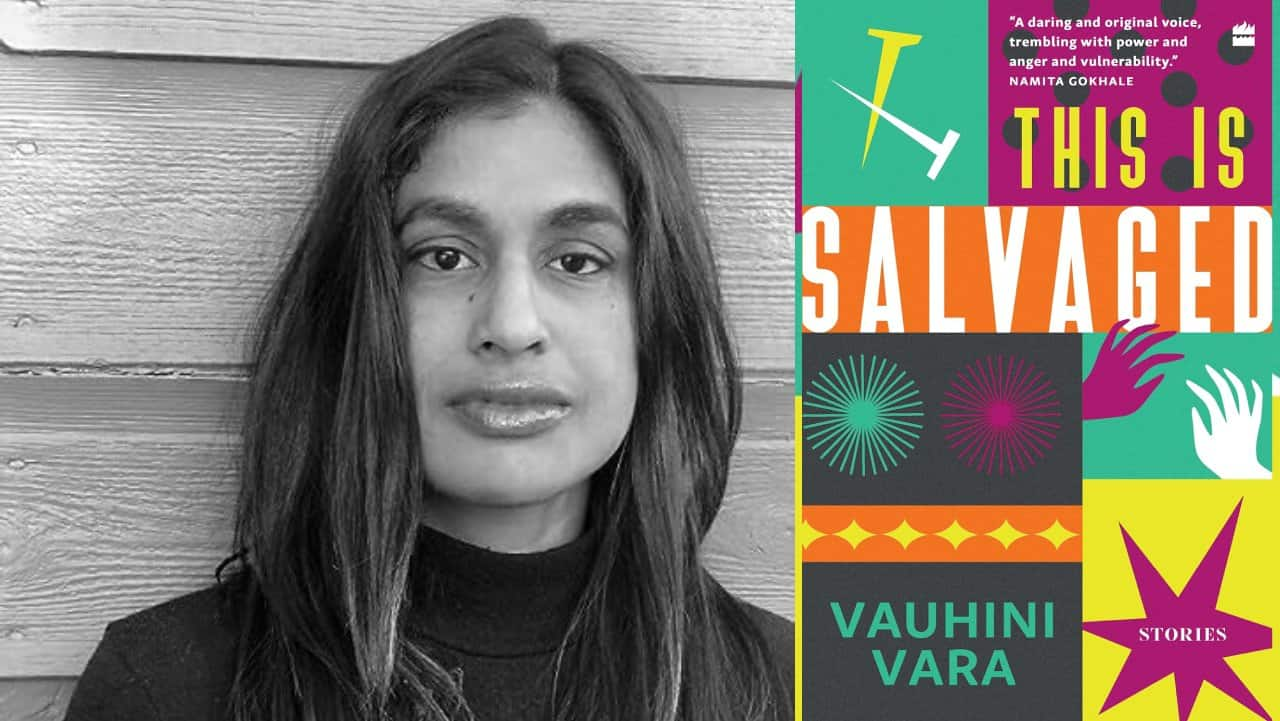 Vauhini Vara's This is Salvaged: Stories was released in September 2023.
Vauhini Vara's This is Salvaged: Stories was released in September 2023.
5. The Covenant of Water by Abraham Verghese
American physician-writer Abraham Verghese returns with his first novel since 2009’s Cutting For Stone, and this one is a fascinating, sprawling epic that covers generations of a family living in Kerala. A Christian family that is afflicted by a strange medical condition: They die by drowning in unusual places, in a land where everyone swims. A treatise on families, myth-building, even a portrait of India for a Western audience, Verghese’s latest mines his gift for suspense, and immense knowledge of the human anatomy, with spell-binding results.
6. Assassin by KR Meera
The Kerala literary superstar’s latest is a nailbiter from beginning to end. Translated into English by J Devika, it begins with a close shave with death for a woman living in the big city, who realises the incident is much more complicated than that—she was actually the target of an assassination, and the conspiracy doesn’t stop at her. Believed to invoke Gauri Lankesh’s murder, KR Meera has said that this book is perhaps the most personal fiction she has ever written. As Satyapriya hunts her demons, you come face-to-face with the insidious violence that follows women everywhere.
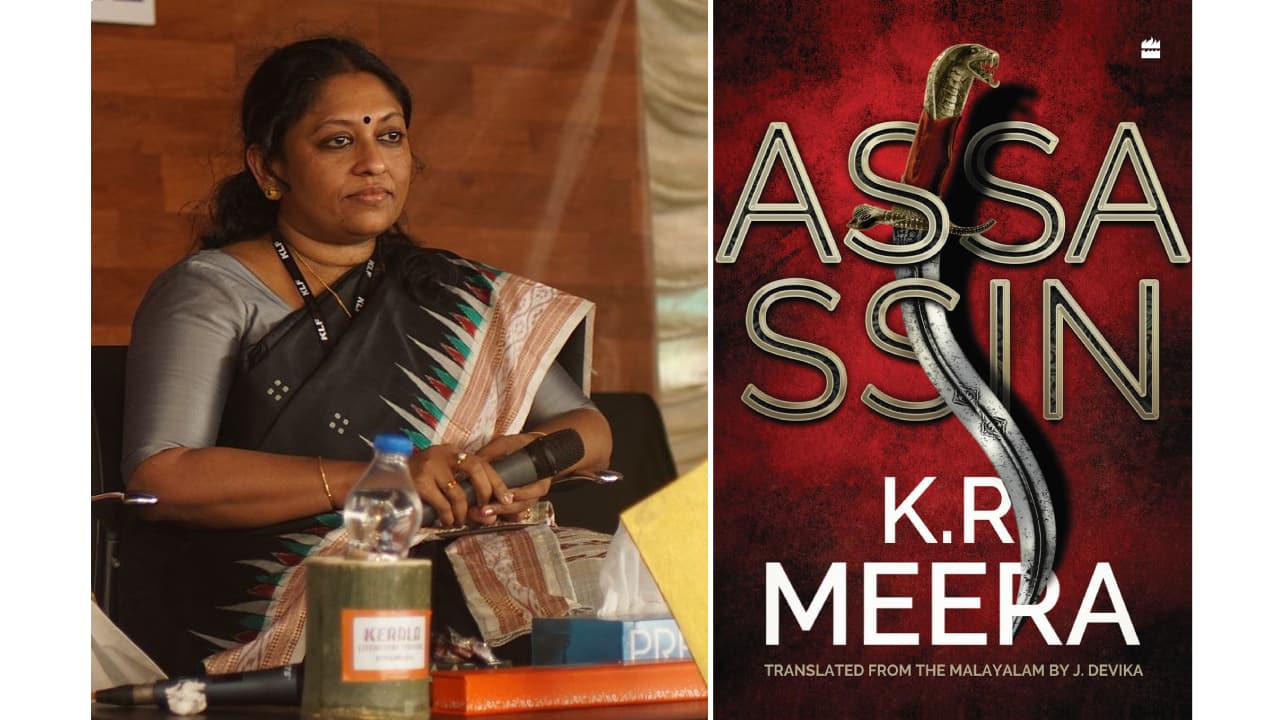 KR Meera at the 2016 Kerala Literature Festival; and the cover of Assassin. (Author photo by Vengolis via Wikimedia Commons 4.0)
KR Meera at the 2016 Kerala Literature Festival; and the cover of Assassin. (Author photo by Vengolis via Wikimedia Commons 4.0)
7. Fire Bird by Perumal Murugan
Winner of the 2023 JCB Prize for Literature, Murugan’s Fire Bird is about a man called Muthu—an everyman on a quest for permanence in a world where no such thing exists. It’s a question triggered when his father cuts up the family farmland, leaving him with almost nothing and pushing his family into uncharted territory, financially, geographically and figuratively. In Murugan’s hands, this ordinary story acquires spectacular depth that scrapes the bottom of the barrel when it comes to social critique and understanding of the human condition.
8. The Best Possible Experience: Stories by Nishanth Injam
Telangana-origin, US-based Nishanth Injam’s debut book of short stories is an empathetic (and sympathetic) look into immigrant life—green card marriages, loss of parents, reckoning with a sense of displacement, yearning for belonging, and fundamentally, the notion of home. Gently related, but always to the point, Injam’s stories implore us to think about the very human ramifications of the “happily ever after” of achieving the American dream.
9. The Light At the End Of The World by Siddhartha Deb
New Delhi’s AQI might be hitting surreal levels, but Siddhartha Deb’s strangely speculative novel imagines strange plausibilities into being. In his latest, The Beautiful and the Damned author connects centuries of Indian history and its potentially apocalyptic future, all of it considered in the background of the events of the last decade—demonetisation, online rage, secret detention centres, nationalist violence. The story is told through five inexplicable chapters of Indian history—located in, for example, Calcutta in 1947, Bhopal in 1984, and Delhi in the early 2000s, where the Monkey Man makes an appearance. An ambitious novel, where the past, present and future are intertwined forever.
10. Western Lane by Chetna Maroo
Shortlisted for the 2023 Booker, Chetna Maroo’s smash debut taps into this moment of national obsession with sports. Its protagonist is 11-year-old Gopi who has been playing squash since she was old enough to hold a racket, and then has the game become her entire world after her mother dies—as her father throws her into the deep end of a rigorous training regimen, perhaps as a way to contend with grief for the both of them. A story of sisterhood, families, life in London, and the sacrifices made to get where we sometimes aren’t sure we want to be. Maroo’s novel underlines the difference between winning and triumph.
11. Victory City by Salman Rushdie
In Victory City, the master storyteller of our time delivered a mythology for the zeitgeist. Pampa Kampana, inspired by the 14th century princess-poet Gangadevi, manifests the empire Bisnaga (or Vijayanagar), ruling it as a sort of feminist utopia over 200 years—because she is cursed with such a lifespan. Portuguese colonisers, magic spells that can turn people into animals all figure in this sprawling fable about a kingdom that was finally brought down by political intrigue, warring factions and bigotry.
12. One Small Voice by Santanu Bhattacharya
Ten-year-old Shubhankar’s life is changed forever in 1992, in a Lucknow rife with riots. As a young adult, on the cusp of achieving everything middle class India dreams of in the 21st century—a good education, a good job, shiny new possessions—he begins to question his life choices. As do his friends, Syed and Shruti—in the optimistic freedom of urban life, they wonder if they could do something…bigger. But then comes a wave of nationalism that cannot be quelled, bringing Shabby back in touch with the demons of his tumultuous past. Bhattacharya’s sizzling debut won the Observer award.
Non Fiction
13. Smoke and Ashes: A Writer’s Journey Through Opium’s Hidden Histories by Amitav Ghosh
India’s greatest contemporary novelist pens a stunning part-memoir, part-travelogue, part-history book that traces how India became the world’s largest producer of opium during the 18th and 19th centuries, the macro and micro stories associated with it and how the poppy plant has indeed shaped the modern world. Amitav Ghosh expertly navigates the immense quantities of research he accumulated while writing his Ibis trilogy, as well as his own personal connection to the plant.
14. H-Pop: The Secretive World of Hindutva Pop Stars by Kunal Purohit
What does popular music and poetry, usually the domain of love, heartbreak and ideological resistance, have to do with contemporary Indian politics? A lot, apparently. Purohit investigates the way that popular music from Haryana and UP has, among other things, used easy verse, an infectious beat and social media to mainstream the agenda of right-wing parties. As Ramachandra Guha writes: “In the country of Bismillah Khan and MS Subbulakshmi, Kishori Amonkar and Kishore Kumar, music has now become an artefact of right-wing propaganda, a vehicle of vindictiveness and violence.”
15. The Day I Became A Runner: A Women’s History of India Through the Lens of Sport by Sohini Chattopadhyay
Journalist and writer Sohini Chattopadhyay’s incredible book is part history, part feminist manifesto, part memoir—diving into the history of some of India’s most famous and promising women athletes to offer surprising insight. She anchors her book in her own story of beginning to run to cope with grief, and through profiles of luminaries like Ila Mitra, the first Indian-origin woman at the 1940 Olympics, to PT Usha who shattered all kinds of barriers in the 1980s, to reckon with why and how women have gone running in the public sphere in a country that has traditionally wanted to keep them indoors.
16. Marginlands: Indian Landscapes on the Brink by Arati Kumar Rao
Environmental photographer and writer Arati Kumar Rao’s beautifully put together book seeks to highlight the subjective experience of climate change, through the under-told stories of people living in zones hit harder by ecological shifts than others. Shepherding tribes in Rajasthan, fishermen tribes in Assam, clans that have settled along the river Ganga—we get a raw look into their lives and the degree to which they have (or not) benefited from modernisation. The black-and-white illustrations add a poetic element to this book—a note of caution.
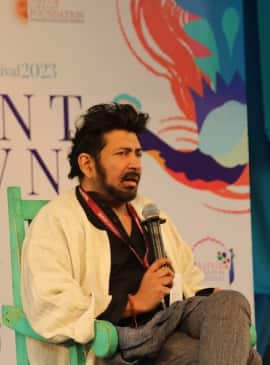 Siddhartha Mukherjee (Photo via X/JLF)
Siddhartha Mukherjee (Photo via X/JLF)
17. The Song of the Cell: An Exploration of Medicine and the New Human by Siddhartha Mukherjee
Pulitzer winner Siddhartha Mukherjee is back to making science, especially the human body, interesting by going down to the fundamentals in his latest, magnificent book—the human cell. Exploring the works of key figures in history, such as the German scientist Rudolf Virchow who saw the human body as a “citizen state” to the inventors of IVF, the US-based oncologist puts the spotlight on the one building block of all human life, while also considering what ails it. As usual, a fascinating read.
18. Fire on the Ganges by Radhika Iyengar
Writer and journalist Radhika Iyengar’s debut work of non-fiction is an incisive, empathetic and considered exploration of what it really means to be part of the Dom community—a sub-caste that has been tasked with burning dead bodies in Varanasi, in essence for those departed to attain moksha; while also being treated as untouchables. Over eight years, Iyengar traced the lives of 30-odd members of the community to underline the irony of this existence, and the challenges of pushing past these brackets.
19. The Half Known Life by Pico Iyer
In this memoir, the world-famous travel writer expounds on the value of stillness while reflecting on his many journeys around the globe, always in search of paradise. He begins in Iran and also considers Kashmir, his prose poetic and evocative of the beauty he has witnessed wrapped in conflict, state surveillance, politics and occasionally, barbed wire. This is Pico Iyer at his ephemeral best.
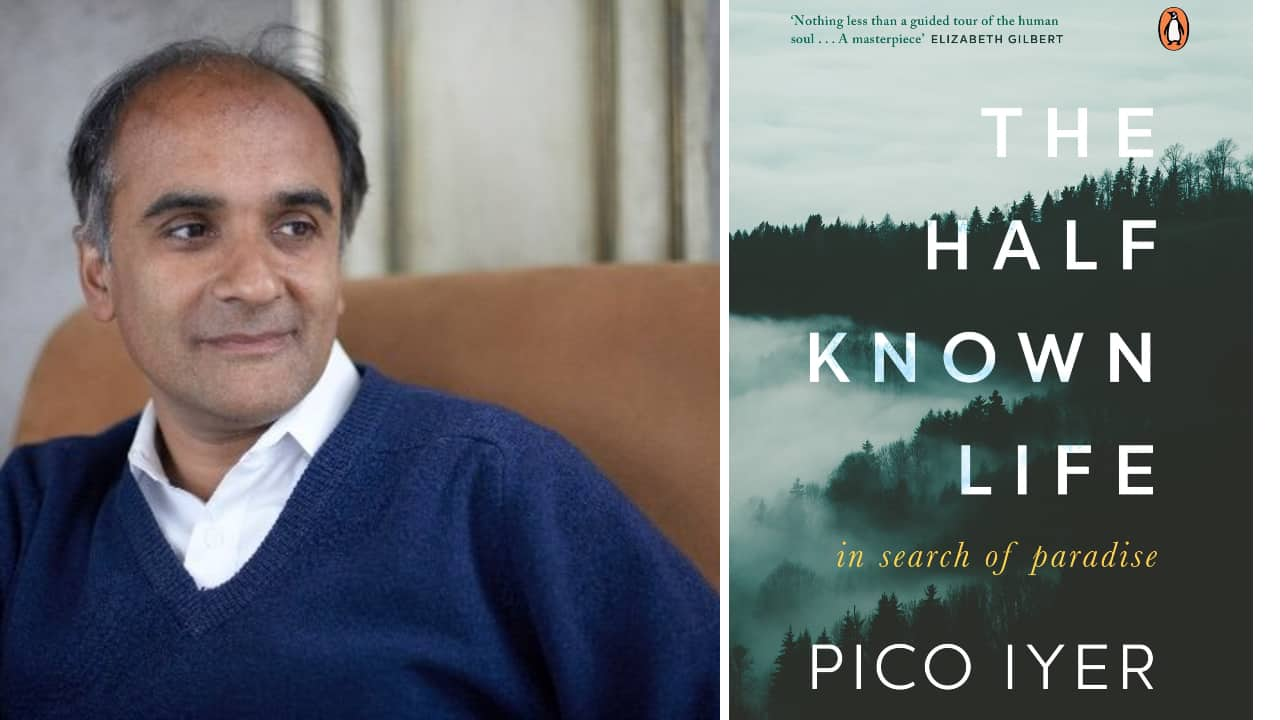 Pico Iyer and the cover of 'The Half-known Life: In Search of Paradise'. (Photo: Twitter/PicoIyer)
Pico Iyer and the cover of 'The Half-known Life: In Search of Paradise'. (Photo: Twitter/PicoIyer)
20. The Yellow Sparrow by Santa Khurai
Santa Khurai, hailing from Manipur, was born male, but began dressing as a woman at the age of 17. She has experienced heartbreak in a heterosexual relationship, and the joys of adoption. An extraordinary memoi, Khurai’s story is at once relatable and unexpected. In a country that is still coming to terms with the legal framework to ensure equitable existence for transgender people, Khurai’s story needs to be read as a testament of courage and conviction in the face of stacked odds.
 Nandini Das and the cover of 'Courting India'.
Nandini Das and the cover of 'Courting India'.
21. Courting India: England, Mughal India and the Origins of Empire by Nandini Das
This one’s for the history buffs. Das’ widely acclaimed chronicle of the early days of the British in the Indian subcontinent—still an enterprise, not yet a “rule”—is actually a riveting tale of the magnificence of the Mughal empire, even if it was on its last legs. By studying the diaries and correspondence of an early East India Company employee and other emissaries in the Mughal court, Das underlines the contrast between two cultures—one that spoke and wrote from a place of prejudice and a supremacist attitude, and the other that had survived centuries in a diverse land by accepting and encouraging that very diversity. Plus, who thought emperor Jahangir could be such an alluring character in Indian history?
22. Raw Umber by Sara Rai
This is an extraordinary memoir from the granddaughter of Hindi fiction’s greatest storyteller, Munshi Premchand—and not just because of that. Rai reflects on her life and legacy through this collection of essays built around the people, worlds and life experiences that filled her world. Grandparents, siblings, parents, distant relatives, homes and oral histories suffuse this book—important as much for being an untold account of a family that had immense impact on Hindi literature, but also of families anywhere.
23. The Great Escape: A True Story of Forced Labor and Immigrant Dreams in America by Saket Soni
After Hurricane Katrina, due to a Green Card scam, hundreds of Indian workers ended up in the US, working in what was essentially a labour camp in Mississippi. These workers were then hunted by the Immigration and Customs Enforcement department—but who had their own private motivations. Soni, who’d gone to the US years prior to study theatre, but had his own visa waylaid due to an error in paperwork, and now runs the non-profit Resilience Force to advocate for immigrant workers, unearths this story with great precision and a thriller writer’s penchant for a sizzling hook.
24. Courting Hindustan: The Consuming Passions of Iconic Women Performers in India by Madhur Gupta
Roopmati, Begum Samru, Begum Hazrat Mahal, Gauhar Jaan, Balasraswati—each iconic, each from a different era, each living up to her own unique strengths. What do they have in common? Perhaps their resilience and determination to carve out their slice in a world that denied them their just desserts. In the hotly-debated conversation on the absence of women performers in contemporary arts and society, what is often forgotten is the erasure, the invisibilisation of those very women. Gupta seeks to correct that through historical accounts of women who blazed truly extraordinary paths.
Discover the latest Business News, Sensex, and Nifty updates. Obtain Personal Finance insights, tax queries, and expert opinions on Moneycontrol or download the Moneycontrol App to stay updated!